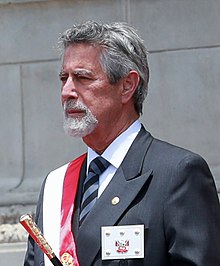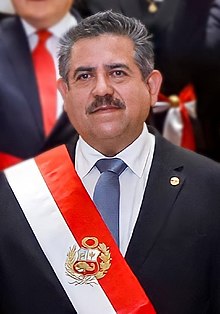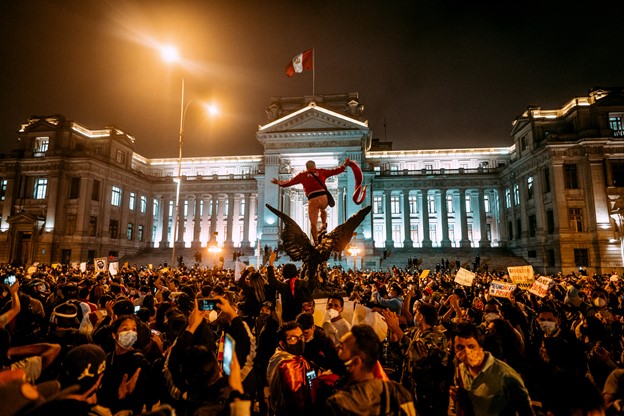The month of November has seen a procession of three presidents in the national palace in Lima. But Peru’s institutional instability dates back much further.
The last elected president was Pedro Pablo Kuczyinski (widely known as PPK), who was elected to a five-year term in 2016.
Two years later, Kuczyinski was alleged by Congress to have taken funds from the Brazilian firm Odebrecht when he was minister of the economy. (His three predecessors were also embroiled in the Odebrecht scandal. One of them, Alan Garcia, shot himself when the police came to arrest him. A second one, Alejandro Toledo, is awaiting extradition from the United States to face charges, while the third, Ollanta Humala, spent six months in jail while the case against him was being compiled).
First Vizcarra
Although the allegations were never proven, PPK resigned when he was facing a second impeachment process. He was replaced by his vice-president Martin Vizcarra.
In March 2020 Vizcarra oversaw elections to the 130 member unicameral Congress. He had previously brought in legislation banning members of Congress from standing for two consecutive terms, in an attempt to bring in fresh blood and overcome old party rivalries.

As a result, there were many new faces in Congress, and when Vizcarra declared that his main aim as president would be to clean up Peru’s political class, he found he could not count on majority support – too many congress members feared that they, too, would fall foul of his anti-corruption drive.
Manuel Merino, the president of Congress, from a party opposed to Vizcarra, began to gather support to start an impeachment process against.
At the first attempt, in September 2020, Merino failed to win the necessary two-thirds majority for impeachment to succeed. He spent several weeks horse-trading and cajoling congress members, and tried a second time on 9 November.
This time 105 out of 130 members voted to impeach Vizcarra on grounds of ‘permanent moral incapacity’. He immediately stepped down.

Second, Merino
Since there was no vice president, it was Merino who took over, according to the provisions of the national constitution.
Onto the streets
What had until then been a struggle within the walls of Congress now exploded on to the streets.
In Lima and other big cities throughout Peru, there were large scale spontaneous protests against Merino. The demonstrators claimed he and his followers had carried out a coup in order to protect themselves against the clean-up Vizcarra had promised (at least 68 out of the 130 total are reported to be facing criminal charges).
Many of the demonstrators, the vast majority students and other young people, also wanted political reforms to try to prevent any further manoeuvres by the discredited Congress.
As in neighbouring Chile, where popular pressure recently led to a referendum calling for the scrapping of the 1980 Constitution pushed through by the dictatorial Pinochet regime, in Peru many of the demonstrators wanted to force Congress to allow a popular vote on the adoption of a new national charter to replace the one promulgated by Alberto Fujimori after his ‘auto-golpe’ of 1993.
The police cracked down hard on the demonstrations. Two people were killed in Lima, and many more injured.
This police brutality only served to fuel public anger, and as a result, Merino was forced to leave office after only five days, before he could even choose a cabinet.
Last Sagasti
Now the choice fell on 76 year-old Francisco Sagasti. He is a moderate centrist who only came into Congress in March 2020 elections as the founder of the Partido Morado, but has a long track record of serving internationally in the World Bank and the United Nations.

For twenty-four hours, Peru had no president, until on 16 November 2020 Sagasti was sworn in as interim head of state. His main duty will be to see Peru through to elections in April 2021 for a new full-term president and another new Congress.
Sagasti has pledged to step down in July 2021 when the election results are confirmed and the new authorities are installed. There is however already talk of him becoming a candidate himself: more than 30 others have already declared an interest in running.
According to local commentators, unless Sagasti and his government can come up with ways to radically alter the make-up of Congress and the plethora of small parties that serve only the interests of their leaders, then Peru’s political turmoil is set to continue.
Main image: A new era of protest rocks Peru. Photo: NACLA/Rupa Flores

